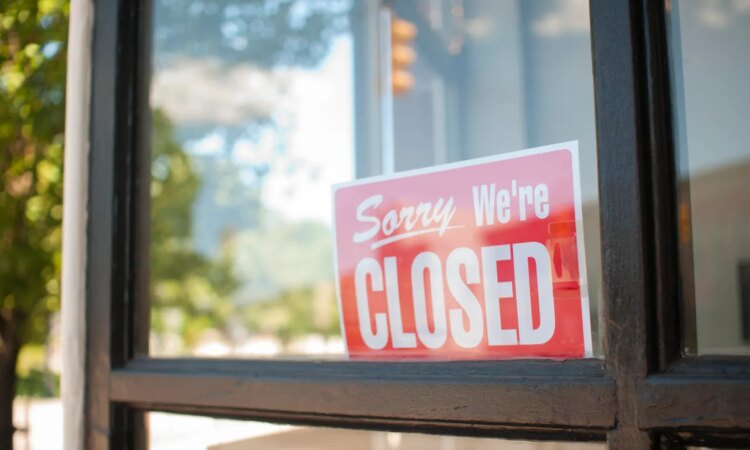
Sorry, We’re Closed Sign in a small town main street storefront window.
getty
Each day of delay in Washington stalls hundreds of small-business dreams across America.
While the shutdown debate in Washington dominates the airwaves, its most tangible effects are being felt far from the capital—in small towns, storefronts, and industrial parks across America.
This week, the U.S. Small Business Administration (SBA) released a sobering state-by-state analysis showing the scope of disruption. The agency’s two flagship loan programs—the 7(a) and 504 loans—are at a complete standstill. Every day the shutdown continues, roughly 320 small businesses are unable to access more than $170 million in SBA-backed financing. Since the first day of the shutdown, that figure has ballooned to over 4,800 small businesses waiting on more than $2.5 billion in stalled loan proceeds.
These aren’t abstract statistics. They represent real companies: manufacturers waiting on capital to expand production, contractors unable to purchase equipment before winter, and retailers losing a critical holiday season. In many cases, these loans had already been approved by lenders but now sit idle, awaiting the federal guarantee that allows them to close.
In California, where small firms account for nearly half of private-sector jobs, an estimated 212 loans a week—totaling roughly $126.9 million—are in limbo. Texas, a state with one of the nation’s highest concentrations of small-business employers, is seeing about 128 loans a week delayed, equating to roughly $89 million in frozen financing. Across the country, the pattern is the same: when SBA programs pause, local economies lose momentum.
What makes this particularly troubling is that SBA lending is not a taxpayer-funded expense. The 7(a) and 504 programs are financed through lender fees and operate at zero cost to the federal budget. They are, in effect, public-private partnerships that multiply access to capital for entrepreneurs who otherwise struggle to obtain it. For every $1 in federal guarantee authority, mission-driven lenders often leverage $6–$8 in private and philanthropic dollars—amplifying the reach of each transaction far beyond the initial investment.
When those programs stall, the ripple effects are immediate. Community banks and mission-based lenders lose the ability to deploy capital efficiently. Borrowers face missed opportunities to hire, invest, and grow. Supply chains pause, project timelines extend, and local hiring plans are put on hold. In rural and urban communities alike, these interruptions compound into measurable slowdowns in local economic activity.
While shutdowns have become a recurring feature of modern governance, their cost to small business is neither inevitable nor acceptable. SBA lending represents less than one-tenth of one percent of the federal budget, yet its economic return is enormous. It is one of the few government functions that directly facilitates private-sector growth—fueling entrepreneurship, innovation, and local resilience.
The lesson for policymakers is clear: small-business lending should not be a casualty of political gridlock. Mechanisms could be established to ensure that self-funded, revenue-neutral programs like SBA’s remain operational during funding gaps. Entrepreneurs can weather many storms, but uncertainty—particularly in access to capital—can be fatal.
For entrepreneurs, the current moment is a reminder of the importance of diversification in financing sources and building strong relationships with mission-based lenders—particularly as the Community Development Financial Institutions (CDFI) Fund itself faces uncertainty. The simultaneous strain on both SBA and CDFI programs underscores a growing fragility in the nation’s small-business financing ecosystem.
As the SBA data makes plain, the cost of political stalemate is being paid not in Washington, but in the small towns, city corridors, and main streets that keep America’s economy running.
Every stalled loan represents delayed hiring, postponed investment, and lost momentum. History shows that restarting small-business lending after a shutdown takes months, not weeks—and some opportunities never return.




